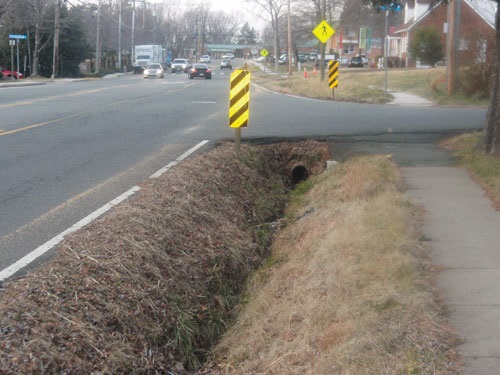A proposal made by the Environmental Protection Agency and the Department of the Army last December to “clarify” federal authority under the Clean Water Act and redefine the term “waters of the United States” or WOTUS would reduce a significant regulatory burden for transportation projects, according to a comment letter filed by the American Association of State Highway and Transportation Officials.
[Above photo by the Federal Highway Administration.]
“While we have concerns with some aspects of the rulemaking, we believe the proposed changes overall would bring greater clarity, consistency, and simplicity to determinations regarding the jurisdictional status of aquatic resources,” the organization said in its April 15 letter.

The new WOTUS proposal would not only place “traditional” navigable waters, tributaries to those waters, certain ditches, certain lakes and ponds, impoundments of jurisdictional waters, and wetlands adjacent to jurisdictional waters under federal oversight, it would also define non-WOTUS categories as well, including: bodies of water formed during or in response to rainfall; groundwater; many ditches, including most roadside or farm ditches; prior converted cropland; storm water control features; and waste treatment systems.
In particular, AASHTO’s letter highlighted the critical importance of defining the term “ditch” in relation to identifying the “jurisdictional status” of roadside ditches that would occur under the revised WOTUS rules.

“We have expressed concern about interpretations that could extend jurisdictional status to the majority of roadside ditches, noting the cost and delays that such an interpretation could impose on ditch maintenance activities, which are vital for maintaining road safety,” the group said in its letter.
The so-called “ditch exclusion” is vital where transportation projects are concerned, AASHTO noted in previous comment letters.
For example, when the Obama Administration first revised the reach of WOTUS, determining “jurisdictional status” and “complying with permitting requirements” would have added “weeks, if not months,” to routine ditch maintenance activities.

“Cumulatively, these administrative burdens impose significant costs on state DOTs [which] therefore have a strong interest in clarifying the legal standards used for determining jurisdictional status of roadside ditches,” the group said.
For example, AASHTO noted in its letter that, four years ago, the Illinois DOT maintained 26,000 miles of roadside ditches as part of its duties, while the Ohio DOT maintained over 98,000 miles of such ditches.
That’s why WOTUS changes being proposed by EPA and the Department of the Army “would help to provide greater certainty to the regulated community and reduce the time and cost associated with making jurisdictional determinations,” AASHTO said.
Altogether, AASHTO said a regionally diverse working group formed by its Committee on the Environment and Sustainability spent four months analyzing the proposed WOTUS rule changes and largely favors them – albeit with clarifications to some of the terminology and definitions used within them – as they would help state departments of transportation both lower project costs while helping speed up time of delivery.
 Nation
Nation
Registration Open for AASHTO’s Winter Rail Meeting
December 19, 2025 Nation
Nation

